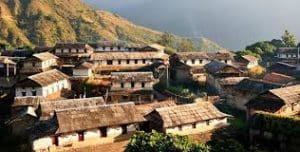Friday, October 11, 2019
 Through his village in Maharashtra, Datta Kondar leads a tourist group to take a look at the firefly spectacle for which it’s immensely popular. With the arrival of the monsoons, during the twilight, thousands of fireflies come out and perform an elaborate courtship ritual, where they signal their potential mates with the help of their glowing bodies in an exciting manner.
Through his village in Maharashtra, Datta Kondar leads a tourist group to take a look at the firefly spectacle for which it’s immensely popular. With the arrival of the monsoons, during the twilight, thousands of fireflies come out and perform an elaborate courtship ritual, where they signal their potential mates with the help of their glowing bodies in an exciting manner.
Kondar, 36 year old, had never wanted to become a tour guide. In 2003, like many rural Indians, he took the typical route and traveled to the city in search of work. But he found himself not capable to manage with the gritty realities of life in Mumbai and returned to his village, Purushwadi, within a year.
“I would rather earn 5,000 rupees [about £60] in my village than 15,000 rupees in the city,” he says.
In his village, he was recruited by Grassroutes, a social enterprise which was conducting a pilot project at that time for community-based tourism. The idea of Mumbai entrepreneur Inir Pinheiro, Grassroutes focuses on reducing migration from villages in India by developing more job opportunities for them. Almost two-thirds of India’s 1.3 billion populations live in rural areas.
“Our primary focus is to empower rural communities. But we also want to celebrate the cultural diversity of India,” says Pinheiro. Currently, about 900 families all over 16 villages in Maharashtra, Andhra Pradesh, Madhya Pradesh and Gujarat are part of the programme.
Almost 95% of the tourists are Indian. “There is a huge urban-rural divide in the country and we want to bridge that gap. By having urban Indians live with rural families, we hope that these interactions will foster an understanding of life on the other side,” says Pinheiro.
Once the village panchayat (council) has accepted the project, locals are given training in various aspects of tourism – hospitality, communication, cleanliness and hygiene, along with safety measures. They are instructed to display their culture, lifestyle and the natural beauty of their village. After the completion of the training, Grassroutes promotes the village and handles bookings. However, it is the villagers who manage and run all the activities.
On a bi-weekly basis, these villagers are paid their dues, making sure that people have a steady flow of cash to pay bills and avoid debt. As well as salaries, for every visiting tourist, the social enterprise pays money into village development fund, to be used for initiatives like building a communal hall for village functions or scholarships for students.
Tourists can come for a day or stay for longer in villagers’ homes. “We create 8,000 to 9,000 days of employment per village annually,” says Pinheiro.
Tags: villages in India
Saturday, April 20, 2024
Friday, April 19, 2024
Friday, April 19, 2024